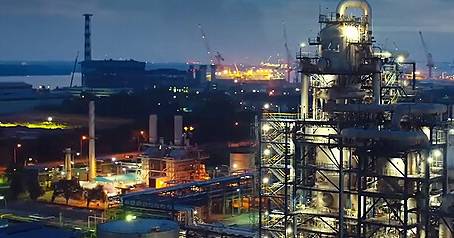gru . 05, 2024 17:06 Back to list
PP Plate Sheet Specifications and Applications in Various Industries
Understanding PP Plate Sheets A Comprehensive Overview
Polypropylene (PP) plate sheets have gained substantial popularity across various industries due to their versatile properties and numerous applications. As a type of thermoplastic polymer, PP is well-known for its excellent chemical resistance, lightweight nature, and high durability. This article will delve into the characteristics, manufacturing processes, applications, and advantages of PP plate sheets, providing an insightful overview for those interested in this dynamic material.
What are PP Plate Sheets?
PP plate sheets are flat, rigid panels crafted from polypropylene. This material is distinguished by its semi-crystalline structure, which contributes to its notable strength and flexibility. The sheets are available in various thicknesses, widths, and lengths, making them suitable for a wide array of applications. They are generally produced through extrusion or calendaring processes, ensuring a uniform thickness and surface quality.
Characteristics of PP Plate Sheets
Understanding the characteristics of PP plate sheets is critical for selecting the right material for specific applications. Here are some key attributes
1. Chemical Resistance PP is highly resistant to acids, bases, and organic solvents, making it ideal for environments that require contact with harsh chemicals.
2. Lightweight Compared to other materials, such as metal or glass, PP plate sheets are significantly lighter, which eases transportation and handling.
3. Durability The material is known for its toughness and impact resistance, allowing it to withstand mechanical stresses without cracking or breaking.
4. Temperature Resistance PP exhibits good thermal stability, capable of withstanding temperatures ranging from -20°C to 100°C (approximately -4°F to 212°F).
5. Ease of Fabrication PP plate sheets can be easily cut, shaped, and welded, facilitating various fabrication processes such as bending, drilling, or thermoforming.
6. Low Moisture Absorption This characteristic makes PP suitable for applications in humid environments, as it does not degrade or swell when exposed to moisture.
Manufacturing Processes
The production of PP plate sheets primarily involves two methods extrusion and calendaring
.- Extrusion In this process, polypropylene pellets are melted and forced through a die to form continuous sheets. The sheets are then cooled and cut to size. This method allows for high production rates and uniform sheet thickness.
pp plate sheet

- Calendaring This technique involves passing melted polypropylene between rollers to create thin sheets. Calendaring is beneficial for achieving specific surface finishes and thicknesses.
Both methods ensure high-quality sheets that meet various industrial standards.
Applications of PP Plate Sheets
PP plate sheets are utilized across a multitude of sectors due to their robust properties. Common applications include
1. Packaging The chemical resistance and lightweight nature of PP sheets make them an ideal choice for packaging solutions, especially in the food industry where hygiene and safety are paramount.
2. Construction In building and construction, PP sheets are often employed as wall cladding, insulation boards, and in roofing applications due to their durability and resistance to moisture.
3. Automotive The automotive sector uses PP plates for components such as interior panels and dashboards, benefiting from the material’s lightweight and impact-resistant nature.
4. Medical In the medical field, PP plates are employed in laboratory equipment and medical devices, owing to their sterilizability and chemical resistance.
5. Signage Owing to their good printability and weather resistance, PP plates are frequently used for outdoor signage and displays.
Advantages of PP Plate Sheets
The benefits of using PP plate sheets are numerous, including
- Cost-Effectiveness With competitive pricing and longevity, PP sheets present a cost-efficient solution for many applications. - Environmental Resistance They do not rust or corrode, leading to lower maintenance costs over time. - Sustainability Polypropylene is recyclable, enhancing its appeal in an era where sustainability is a critical consideration.
Conclusion
In summary, PP plate sheets represent a versatile and efficient material with a broad spectrum of applications. Their unique properties, along with the processes used in their manufacture, make them indispensable across various industries. Whether you are in packaging, construction, automotive, or medical fields, understanding the benefits and applications of PP plate sheets will help you make informed decisions that can enhance your projects and business operations.
-
HDPE Natural Sheet: Durable, Food-Grade & Versatile Plastic Solutions
NewsAug.27,2025
-
Durable Glossy PVC Rigid Sheet | Premium High-Shine Panels
NewsAug.26,2025
-
Durable PP Rigid Sheet: Lightweight, Chemical Resistant Solutions
NewsAug.21,2025
-
PVC Grey Sheet for Extraction: Chemical Resistant & Durable
NewsAug.19,2025
-
Durable PVC Pipe Fittings for Plumbing & Irrigation Needs
NewsAug.18,2025
-
HDPE Steel Belt Reinforced Spiral Corrugated Pipe | High Strength
NewsAug.17,2025

